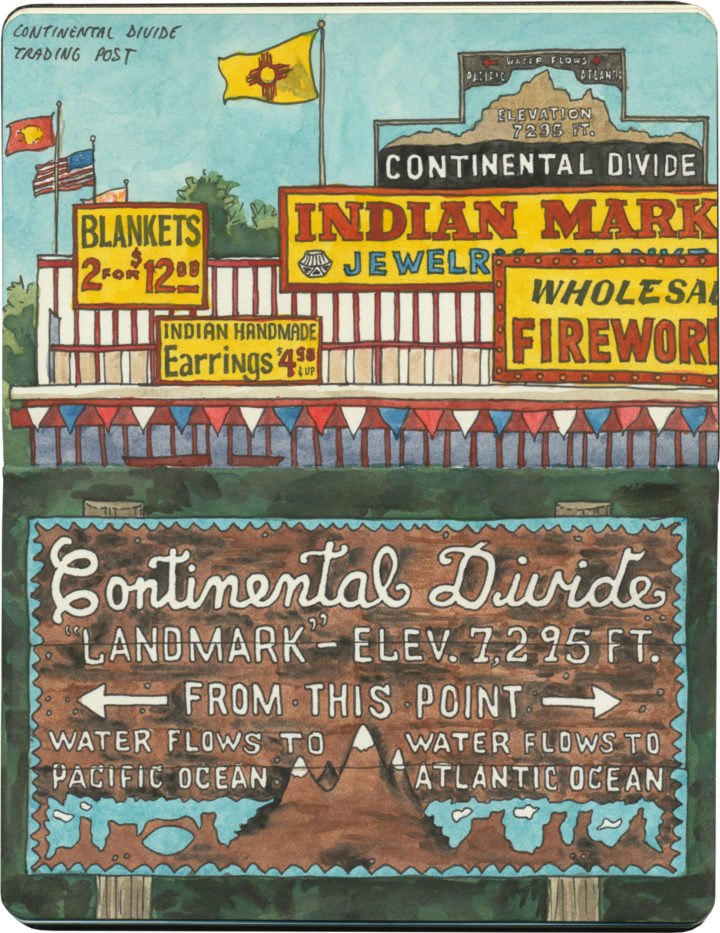This post is part of an ongoing series called 66 Fridays, which explores the wonders of old Route 66. Click on the preceding “66 Fridays” link to view all posts in the series, or visit the initial overview post here.
If you’ve ever done a coast-to-coast road trip, you’ll have crossed the Continental Divide somewhere. (Depending on your route, you might have crossed it more than once in the same day.) It’s easy to take for granted now, but back in the days of early overland travel, finding and crossing the divide between the Atlantic and Pacific watersheds was a big deal.
Luckily, the U.S. highway authorities still think it’s a big deal, and want to make sure you notice it. From Montana to New Mexico, the Great Divide is well-marked wherever a road crosses it. Whether it’s a gravel goat track, a county road, or a four-lane freeway, you’re sure to find some sort of commemorative sign or plaque. And nothing tops the marker on Route 66.
Heck, the Mother Road comes through with more than just a wayfinding marker: these folks have made a bona fide roadside attraction out of river drainage. And more power to them—this is Route 66, after all. I’d expect nothing less.

